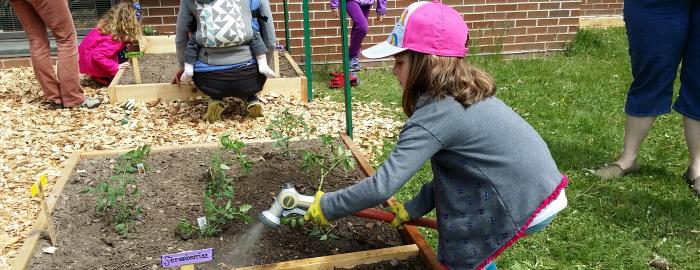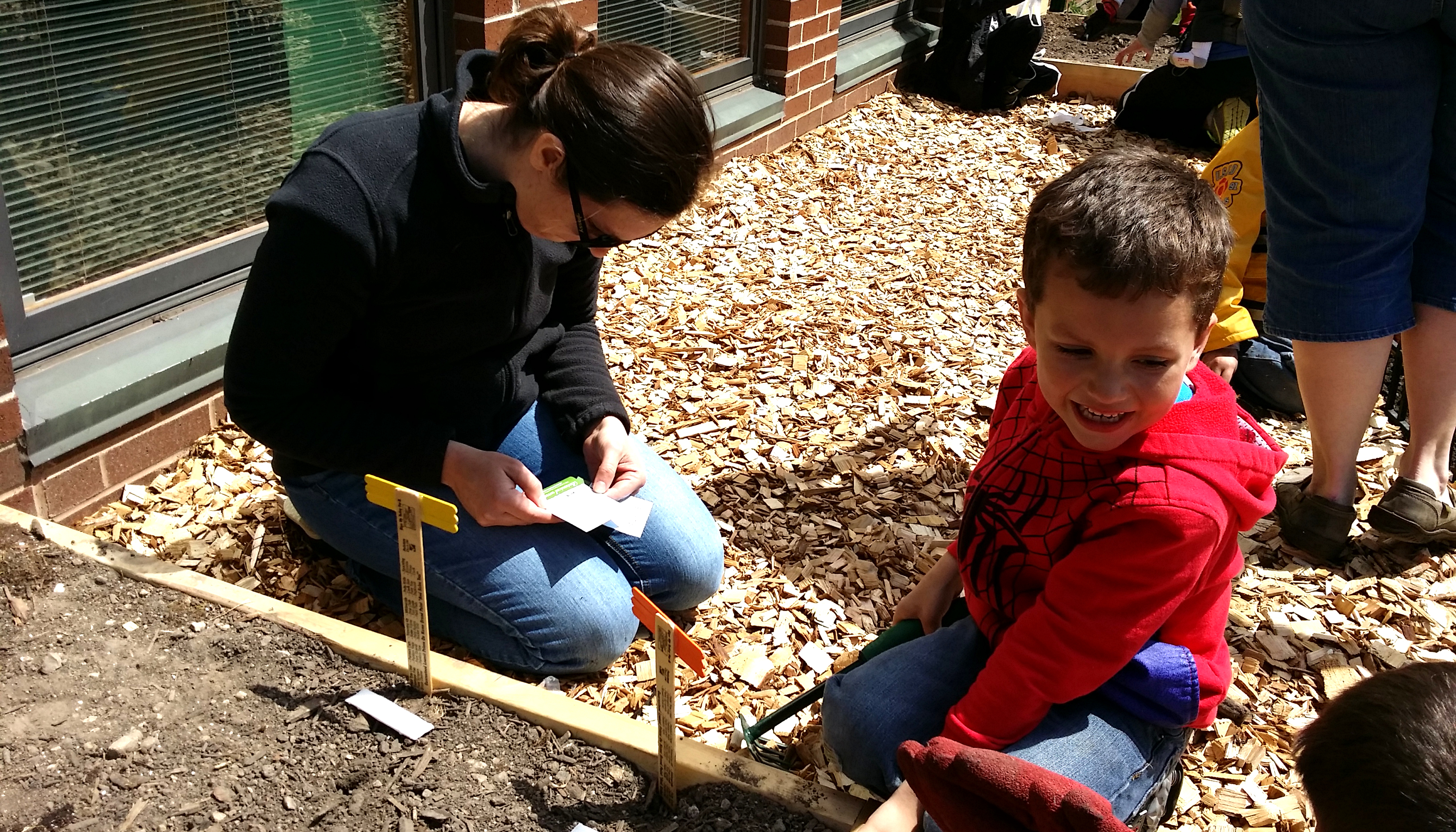
The big question on the ESAA kindergarteners’ minds this past spring was “Where does food come from?” To help answer this many-faceted question, kindergarten teachers Jodi Kimme and Brittany Hattabaugh guided their students through a series of field trips, projects and thought processes. The learning process included two trips to a local farm, as well as one to a cheese factory and one to a plant nursery.
“We really want kids to get that experiential learning,” Kimme said. “That’s absolutely number one. You can teach a child the alphabet, or you can have them experience it in the real world. It creates thinking and challenges them to keeping questioning everything around them.”
During their trips to the farm, Kimme said, is when students had some of the most unforgettable moments. “They’re never going to forget holding a baby chick or brushing a horse,” she said. “It helps them make that connection that will last forever.”
According to Kimme, this project has been done in the past, however it changes on a yearly basis. “We try to make a plan, but it really ebbs and flows with what the kids are interested in,” she said.
One of the main components that interested the kindergarteners this year was plant food. The teachers decided to run with the idea and have the students create a garden. “We tried to make it as relatable to the kids as possible,” Hattabaugh said. “This way they can really observe [the garden] and remember what they learned; they’re all helping take care of it this summer.”
Hattabaugh said the garden was very student-directed, with the students breaking up into different groups that focused on different aspects of its creation. For example, one group worked on a design that would allow all of the plants to flourish while another came up with a fencing system to protect it. “It really allowed students the opportunity to reflect on their decisions and revise their plans if they didn’t work,” she said.
“With any project or design, we don’t fix it for the kids,” Kimme said, “instead we give them warm and cold feedback, telling them what is good about it and what could be improved... This really leads to further investigation and deeper inquiry.”
Even with the students so heavily involved in the garden’s construction, Hattabaugh said it wouldn’t have been possible without the help of parent volunteers. “They were there for all stages,” she said. “There was a huge amount of collaboration between us and the parents... Everyone was on board.”
“The community was key,” Kimme said. “This is where they grow up, where they live, who they are. The more they understand the community aspects [of the project], the more connections they create, which leads to authentic learning. They’ve created links and connections for the future and learned they can go out and be productive members of our community.”
“This was a really big job,” Hattabaugh said. “I know the kids are very proud, and we are too.”


